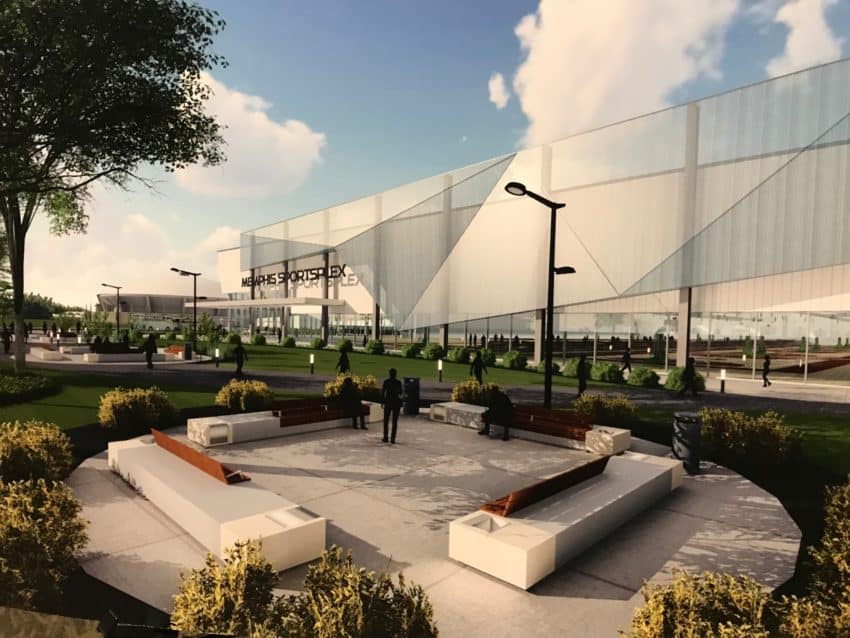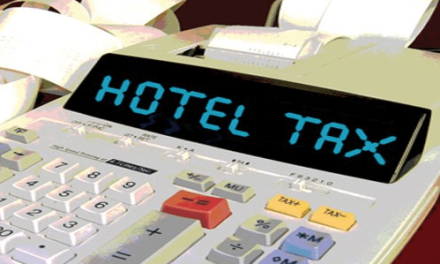It’s been a long, strange trip, but after 16 years, the future of the Fairgrounds has ended up at the same place twice.
Now that the Strickland Administration’s proposal for the 175 acres mirrors the one developed by the Wharton Administration, it’s reassurance that the approach must be the right one.
It was reported that City of Memphis officials attended the Cotton Bowl featuring University of Memphis were inspired by Texas Live!, the $250 million entertainment area built between the Rangers’ Globe Life Park and the Dallas Cowboys AT&T Stadium in Arlington, Texas. The development was a partnership of Cordish Companies and Texas Rangers.
Texas Live! has 200,000 square feet of retail, dining, and entertainment; a 300-room Loews Hotel; and a 5,000-person event space. It is heavy on restaurants and bars and light on retail.
Interestingly, Texas Live! was a model used by the Wharton Administration for the future of the Fairgrounds as well as Ballpark Village, the Cordish Companies and St. Louis Cardinals entertainment development adjacent to and integrated into Busch Stadium. Ballpark Village’s $100 million first phase was 150,000 square feet of bars, restaurants, and the Cardinals Hall of Fame and Museum. The second phase will include a hotel and apartment building.
The Background
The Strickland Administration’s proposal for the Fairgrounds could cost as much as $180 million. The Wharton Administration proposal filed with State of Tennessee proposed a $233 million plan, but Director of Housing and Community Robert Lipscomb, said later that it would cost $134.2 million.
It’s been a circuitous journey for the project, punctuated by controversy, calls for more public input processes, and backlash. It began in 2004 with the appointment by the Memphis and Shelby County mayors of a special committee to recommend the best uses of the then-empty Pyramid and the Fairgrounds.
Three years later, the subcommittee for the Fairgrounds issued a report: “The future vision of the Fairgrounds is to build on its historic role and location as a family recreation center to become the heart of the city for children, youth, and their families. Furthermore, it will be the place where an unprecedented diversity of Memphians can come together to recreation, learn, and grow, forming a tapestry of people that make up the ‘family’ of our great city. Both literally and figuratively, the Fairgrounds will serve as a ‘level playing field’ for all Memphians to refresh and build body, mind, and spirit while strengthening bonds with the families and community through recreation, entertainment, and education.”
The subcommittee, chaired by Methodist Healthcare Executive Cato Johnson, introduced the idea of mixed uses with an emphasis on amateur sports. Looney Rick Kiss fleshed out the concepts and the first images of a revived Fairgrounds emerged.
Problematic
By then, the idea of a sports tourism focus had been around since the late 1980s and gained momentum in the 1990s when the Greater Memphis Chamber of Commerce, Memphis Convention and Visitors Bureau (now Memphis Tourism), and Shelby County officials urged a major push that contributed to the establishment of the Memphis and Shelby County Sports Authority and the Memphis Sports Council at the CVB.
As difficult as the Pyramid was, the Fairgrounds was even more problematic. Both needed more than just a vision for undervalued public property. More to the point, they needed a financial plan that did not require any money from the City of Memphis operating budget.
Development of the Wharton Administration’s plan encountered almost immediate criticism – from Cooper-Young residents and businesses, people dedicated to preserving the Mid-South Coliseum, owners of suburban baseball complexes, people concerned about competition with Overton Square, county commissioners and mayor concerned about lost school funding, some state legislators, people concerned about the size of the Tourism Development Zone, and others.
Eventually, after issuing its recommendations and to tamp down the criticisms, the Wharton Administration in 2015, the Wharton Administration paid Urban Land Institute (ULI) to review and “retest” its proposed development plan, consider options for the Coliseum, and along with the National Charrette Institute, conduct public meetings and gather public opinion online.
A Whimper
Ultimately, the ULI report was not a bang, but a whimper, covered extensively by the news media but with limited impact. Its financing proposal had holes in it and assumptions that weren’t based in fact. It recommended a 150,000 square foot indoor sports tournament and practice facility; addition of an eight-acre water park; creation of a Midtown Collaborative to engage surrounding neighborhoods; reduce the amount of retail and hotel space to 20,000 square feet with the focus on casual restaurants and no hotel early on; and repurposing the Coliseum into a roofed, open-air venue with covered seating for 1,500 (modeled after Pittsburgh’s Stage AE).
Meanwhile, grassroots leaders established the Coliseum Coalition to preserve the former arena and Friends of the Fairgrounds which called for more community input and organized events to rally people to get involved. The Friends group also hoped it would be designated by City of Memphis as its comprehensive planning partner.
That was not to be but Memphis Mayor Jim Strickland heard them and launched a new process with more public input and in cooperation with community groups, to set a vision and recommendations for the Fairgrounds.
Already, Libertyland, the pint-sized theme park, had been removed; 16-acre Tiger Lane had been built; and the Liberty Bowl had been improved. In a new round of public meetings, about 200 ideas were gathered, and they were vetted and due diligence conducted.
In July 2018, City of Memphis presented a proposal from the “wish list” of uses, bringing the cost down from $160 million to $100 million. The centerpiece of the development would be a youth sports complex, 185,000 square foot space that could house an indoor track, 12 courts for basketball and volleyball, space for gymnastics and cheer competitions, fencing, wrestling, and other indoor sports. It included a 285-car garage and a 300-car lot, improvements to Pipkin Building and Creative Arts Building.
City officials said it would be in the top 10% of youth sports complexes in the country and the only one within a 210-mile radius of the Fairgrounds. Its feasibility study, according to City of Memphis, projected 50 events in its first year and reach 80 by the fifth year.
It was projected to create a $1 billion economic impact over 30 years.
Big Bank For The Buck
It was inescapable during the Wharton Administration that the State of Tennessee was stalling in approving its application for a Tourism Development Zone, but with a new city administration and a new approach, the TDZ was approved in November 2018. Mayor Strickland told state officials that the project would not move forward unless $61 million in private funds were raised to help finance it.
The primary source of funding is to come from the Tourism Development Zone which includes the Fairgrounds and extends to Crosstown Concourse, according to the Memphis Business Journal. Within that three square mile “zone,” which State of Tennessee has approved, increases in local and state sales taxes above the existing baseline would go to pay for the Fairgrounds project.
That sounds straightforward but nothing is that simple when it comes to state law. While City of Memphis will collect all new sales taxes over a baseline amount, that baseline will be recalculated every year by the percentage of growth in sales taxes countywide.
Although the TDZ was used in Nashville for its $623 million Music City Center convention center, no city has gotten more bang for the buck than Memphis – the Fairgrounds, Pinch Historic District, Convention Center improvements, Bass Pro Shops at The Pyramid, pedestrian bridge over Main Street in Pinch District, Lowes Hotel, Cossitt Library renovations, buying Shelby County’s interest in the convention center, and riverfront parks improvements.
The Turnaround
Only a few years ago, no one would have predicted such a positive outcome for Memphis. State officials clearly were not motivated to help Memphis and after three years of trying to file an application, the Wharton Administration was stuck in a process where state officials always had more questions and the local political issues surrounding remained unresolved.
The Wharton Administration application called for as much as 500,000 square feet of retail, commercial, residential, and hotel; a 16-acre urban park; and a massive sportsplex.
Put simply, the sales tax-producing elements of the plan had to be sized to deliver the desired revenues and as a result, the revenues drove the square footage. That said, Mr. Lipscomb said the size of the commercial area would be “market-driven,” and he met with executives of Cordish Companies about being part of the project.
In October of last year, the Strickland Administration announced that the Fairgrounds would have a 227,000 square foot indoor sports and events complex and 700,000 square foot, private mixed-use development. Virginia-based Eastern Sports Management will operate the sportsplex. The city had previously selected James Maclin’s M&M Enterprises of Memphis and Belpoint REIT of Greenwich, Connecticut, to develop the retail, restaurants, hotel, offices, and apartments.
In February, City of Memphis said it is seeking “destination retail” for the 18-acre development, and James Maclin could redevelop 100 units of apartments and some retail. Its cost was estimated at $180 million and city government would control more of the development.
Recently, City of Memphis confirmed that it had talked with Texas-based Cinergy Entertainment, a movie, arcade, and entertainment center on steroids, about it being part of the Fairgrounds. It normally needs about 90,000 square feet, which would suggest that it could be an anchor tenant.
After 16 years, the Fairgrounds’ future has landed on a similar development plan as four years ago, but if anything, the success of city government getting state approval for the site’s TDZ (not to mention approvals for the downtown TDZ) proves that there are times when the messenger is even more important than the message.
From the beginning, the Strickland Administration took a more measured, diplomatic approach with state officials, and despite all odds to the contrary, it succeeded in getting done in four years what had been on the agenda for the previous 14 years
**
Join us at the Smart City Memphis Facebook page for daily articles, reports, and commentaries relevant to Memphis.




